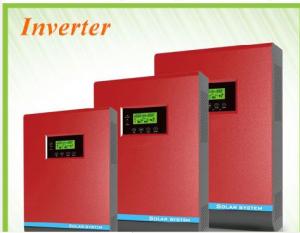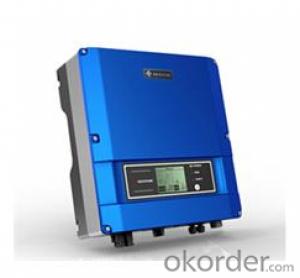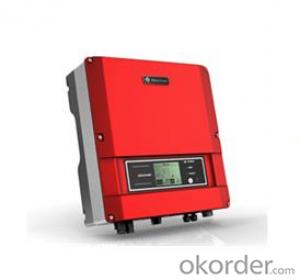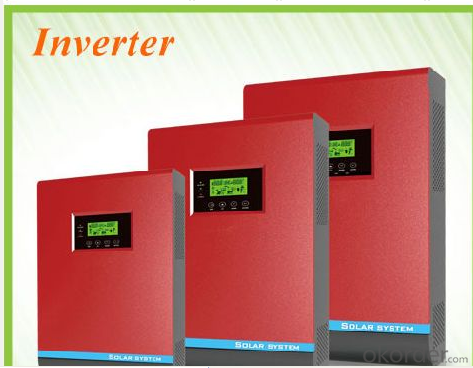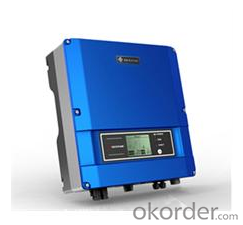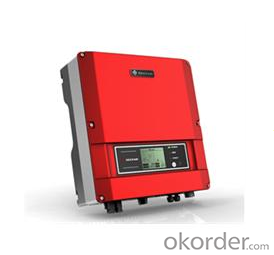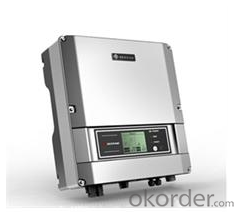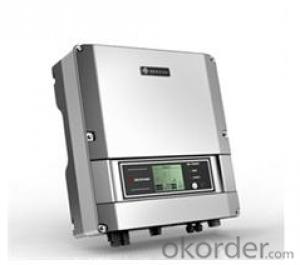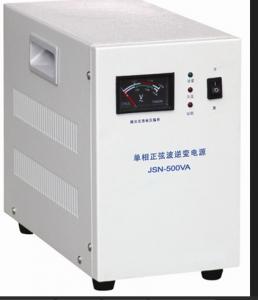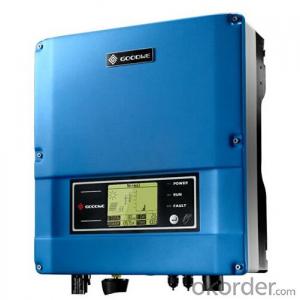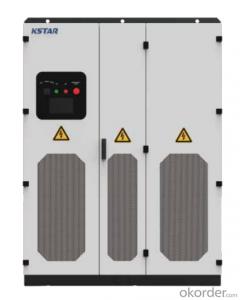Infini Solar Inverter GS1500-SS
- Loading Port:
- Shanghai
- Payment Terms:
- TT or LC
- Min Order Qty:
- 10 unit
- Supply Capability:
- 100 unit/month
OKorder Service Pledge
OKorder Financial Service
You Might Also Like
Description:
GW1500-SS photovoltaic inverter is suitable for home rooftop photovoltaic system, designed under modern industrial concept. There are three colors for option with fashionable appearance. This model is applicable for the photovoltaic system with open-circuit voltage less than 450V, maximum output power less than 1800W. Its maximum conversion efficiency can reach 97%. First-class harmonic control ability, small size and light weight make it hold a safe lead among similar products.

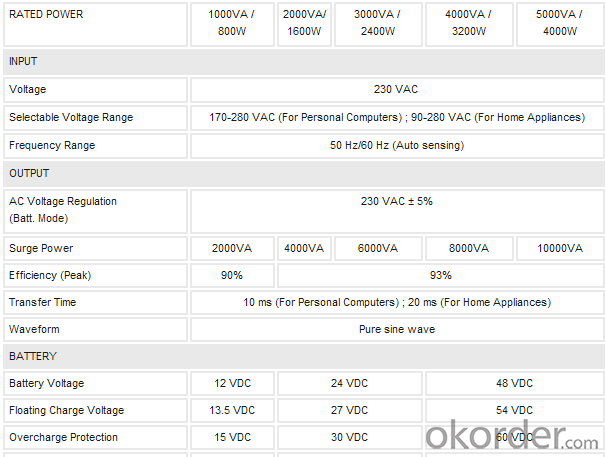
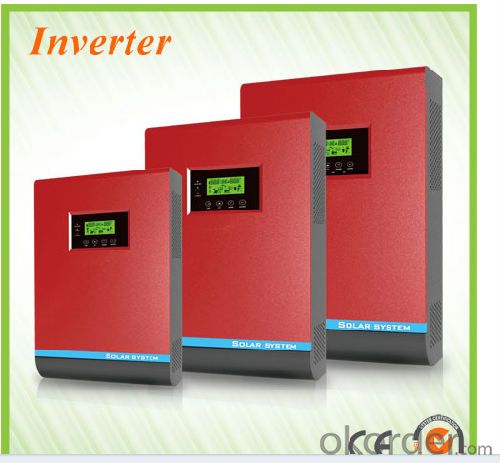
FAQ:What's your warranty?
Our warranty is 1 year
- Q: How do you choose the right size of solar inverter for a solar power system?
- To choose the right size of solar inverter for a solar power system, you need to consider two main factors: the total power output of your solar panels and the maximum power consumption of your household or facility. First, calculate the total wattage of your solar panels by summing up the individual panel ratings. Then, assess your power consumption by considering the peak load requirements or the average daily consumption. Match the inverter's capacity to the higher value among these two factors to ensure efficient energy conversion. It is also recommended to consult with a professional solar installer to ensure the correct sizing of the inverter based on your specific needs.
- Q: Can a solar inverter be used with different tracking algorithms?
- Yes, a solar inverter can be used with different tracking algorithms. Inverters are designed to convert the DC power generated by solar panels into AC power for use in homes and businesses. They typically have the ability to integrate with various tracking algorithms that optimize solar panel performance by adjusting their position and angle according to the sun's movement. This flexibility allows for increased energy production and efficiency based on the specific tracking algorithm used.
- Q: What is the maximum current output of a solar inverter?
- The maximum current output of a solar inverter depends on its size and specifications. In general, smaller residential inverters may have a maximum output current of around 8-12 amps, while larger commercial or utility-scale inverters can go up to several hundred amps. It is important to select an inverter that matches the specific requirements of the solar PV system to ensure optimal performance and safety.
- Q: How does a solar inverter handle variations in solar panel degradation over time?
- A solar inverter handles variations in solar panel degradation over time by continuously monitoring the performance of the solar panels. It adjusts the power output and voltage levels accordingly to optimize the energy conversion process. This adaptive capability allows the inverter to compensate for any decrease in efficiency caused by degradation, ensuring maximum power generation from the solar panels throughout their lifespan.
- Q: What is the maximum efficiency of a solar inverter?
- The maximum efficiency of a solar inverter typically ranges from 95% to 98%.
- Q: How does a solar inverter interact with a battery storage system?
- A solar inverter interacts with a battery storage system by converting the direct current (DC) electricity produced by solar panels into alternating current (AC) electricity, which is then used to charge the batteries. The inverter also ensures that the power from the batteries can be used to supply electricity to the loads when there is no sunlight or during a power outage. Additionally, the inverter manages the flow of electricity between the solar panels, battery, and the electrical grid, optimizing the system's overall efficiency.
- Q: Can a solar inverter be used in a floating solar system?
- Yes, a solar inverter can be used in a floating solar system. The inverter is an essential component of a solar power system that converts the direct current (DC) generated by the solar panels into alternating current (AC) electricity that can be used to power various devices or be fed into the grid. Whether the solar panels are installed on the ground, rooftops, or floating platforms, the inverter's role remains the same. Therefore, it can certainly be used in a floating solar system to ensure efficient and reliable power conversion.
- Q: Can a solar inverter be used in remote areas?
- Yes, a solar inverter can be used in remote areas. Solar inverters are designed to convert the direct current (DC) generated by solar panels into alternating current (AC) that can be used to power electrical devices. As long as there is access to sunlight, solar panels can be installed in remote areas to generate electricity, and the solar inverter can then be used to convert and distribute that power for various applications. This makes solar inverters a useful and sustainable solution for remote areas that may not have access to grid electricity.
- Q: How does a solar inverter handle voltage fluctuations?
- A solar inverter handles voltage fluctuations by continuously monitoring the incoming solar power and adjusting its output voltage accordingly. It uses advanced electronics and control algorithms to ensure that the output voltage remains stable and within a specified range, regardless of variations in the input voltage. This allows it to provide a consistent and safe supply of electricity to connected devices, even in the presence of voltage fluctuations.
- Q: How does a solar inverter handle partial shading on solar panels?
- A solar inverter handles partial shading on solar panels by utilizing a technique called Maximum Power Point Tracking (MPPT). MPPT allows the inverter to constantly monitor and adjust the voltage and current levels of each solar panel to ensure that it operates at its maximum power output despite shading. This is achieved by dynamically redistributing power between the shaded and unshaded panels, optimizing the overall energy generation of the entire solar array.
Send your message to us
Infini Solar Inverter GS1500-SS
- Loading Port:
- Shanghai
- Payment Terms:
- TT or LC
- Min Order Qty:
- 10 unit
- Supply Capability:
- 100 unit/month
OKorder Service Pledge
OKorder Financial Service
Similar products
Hot products
Hot Searches
Related keywords
